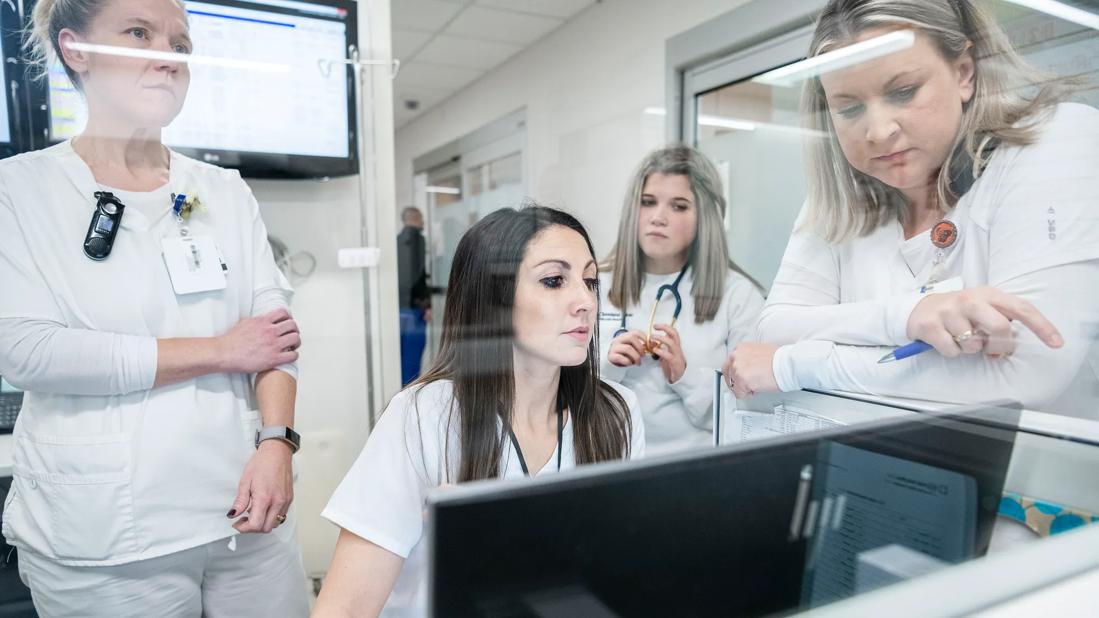Improve quality by encouraging nurses to ask "why"

By Sue A. Behrens, DNP, RN, ACNS-BC, NEA-BC, Vice President, Chief Nursing Officer, Cleveland Clinic Hillcrest Hospital and Mentor Hospital
Advertisement
Cleveland Clinic is a non-profit academic medical center. Advertising on our site helps support our mission. We do not endorse non-Cleveland Clinic products or services. Policy
Nurse leaders live and breathe quality. We educate our teams on it and push for the highest levels of it. From our efforts, most nursing caregivers recognize that improving quality is important — but what they don’t always understand is the why behind the ask. One of the best ways leaders can help nurses connect the dots is by fostering a culture of curiosity.
When leaders encourage curiosity on their teams, people are free to unleash their creativity and explore new options. They pause, step outside the black-and-white of current process and practice, reconsider and ask questions that challenge the status quo.
Nurses begin thinking with a more proactive improvement mindset and regularly evaluate and identify potential opportunities. This opens teams to new ideas, workflows and innovations and inspires
caregivers to make suggestions for ongoing continuous quality improvement (CQI) — leading to practice changes that enhance quality, as well as patient safety and experience.
To foster a culture of curiosity three primary themes are necessary: 1. a safe environment that promotes questions, 2. the ability to learn from trial and error, and 3. support for innovation.
Curiosity best enables change when all team members feel safe and comfortable bringing ideas and suggestions forward. Creating a psychologically safe space for sharing and asking questions calls for collaboration and trust among the nursing team, providers and other caregivers across the organization.
Ensuring a no-blame environment is key and allows a group of different disciplines to effectively work together, explore and listen to each other while focusing on the best outcomes for patients, caregivers and the organization.
Advertisement
When caregivers communicate, share stories, insights and lessons learned, teams are better equipped to improve the care they provide.
Considering lessons learned from trial and error is pivotal to making change. These firsthand experiences help create a shared reality that shows nurses — and all caregivers — what matters most, and how implementing change can positively affect patient care, safety and experience.
Leaders who lean into cultures of curiosity support ideation and inspire caregivers to innovate — and to look outside the box when doing so. Encouraging nurses to engage with stakeholders, including patients, families, communities, other disciplines, internal committees, and outside organizations (even those not in the healthcare field), not only offers food for thought, but it also enhances situational awareness and can address preconceived assumptions or unconscious biases.
When caregivers consider others’ viewpoints as part of the innovation process, new information and ideas surface, problem-solving is more comprehensive, the risk of missing pertinent information is minimized, and deeper insight is offered for making change.
In a recent Cleveland Clinic Hillcrest Hospital committee meeting, a nurse and a patient care nursing assistant from one hospital unit brought forward information about patient falls. They shared patient stories and insight, presented questions and invited other caregivers and disciplines, including nurse educators, physical therapists and nursing assistants, to offer their input, thoughts and recommendations on safety and quality improvements.
Advertisement
Casting a wider net bolstered rich, positive discussion. Considering the viewpoints of others helped the nursing unit maximize improvement practices and resulted in overall decreases in patient falls and falls with injury.
In addition to improving quality, environments of curiosity promote continuous learning, which increases job satisfaction and retention. As nurses build knowledge, they become more engaged in their work and are empowered to grow in their careers.
They also work better with their peers, building trust and respect as they aim to improve together. Curiosity increases collaboration and allows teams to better understand the why and how the care they provide affects the overall outcome of the quality indicator.
Additionally, with CQI consistently in motion, organizations strengthen improvement structures and enhance standardization. Organizational goals are also supported. At Cleveland Clinic, health system objectives and key results are guided by the organization’s mission and values — to which every leader aligns their action plans. Giving caregivers the opportunity to be curious about strategic planning in their practice areas strengthens their connection to the organization’s goals while driving individual and team success.
Advertisement
Advertisement

How hospitals can weave ethics into daily nursing practice to strengthen patient-centered care

Guiding nurses amid a constantly evolving healthcare landscape

Ideation session generates solutions to medication administration errors

Caregivers spearhead changes that improve patient care, shape hospital culture

Building a culture that supports, engages and empowers nursing staff

Nurses harness cutting-edge technology as a bridge to healing

Optimizing care while protecting patients from life-threatening reactions

Palliative nurses improve quality of life